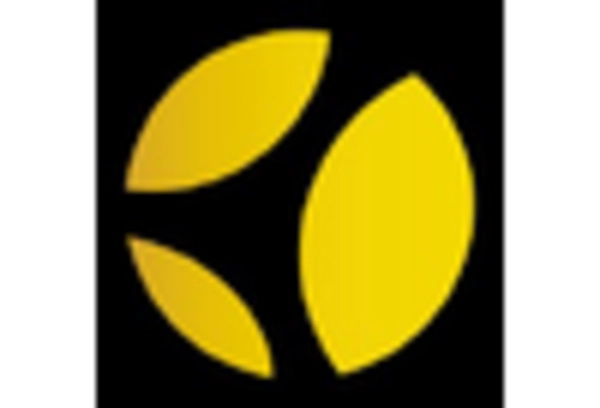Craft Beer Movement
The Ale Beer Market is experiencing a notable surge due to the craft beer movement. This trend reflects a growing consumer preference for artisanal and locally produced beverages. As of 2025, craft beer accounts for approximately 23% of the total beer market, indicating a shift in consumer behavior towards unique flavors and brewing techniques. The rise of microbreweries and brewpubs has contributed to this growth, fostering a culture of experimentation and innovation. Consumers are increasingly seeking out distinctive ales that offer a personal touch, which has led to a diversification of product offerings within the Ale Beer Market. This movement not only enhances consumer engagement but also stimulates local economies, as many craft breweries source ingredients from nearby farms, thereby promoting sustainability and community support.
Health and Wellness Trends
The Ale Beer Market is adapting to the increasing health and wellness trends among consumers. There is a growing demand for low-calorie and low-alcohol options, as health-conscious individuals seek to enjoy their favorite beverages without compromising their dietary goals. Recent data suggests that the market for low-alcohol ales has expanded by 15% in the past year, reflecting a shift in consumer preferences. Additionally, the introduction of gluten-free and organic ales caters to specific dietary needs, further broadening the consumer base. This trend indicates that the Ale Beer Market is not only responding to health concerns but is also innovating to meet the evolving tastes of a more health-aware population. As a result, breweries are likely to invest in research and development to create healthier ale options that align with these consumer demands.
Sustainability Initiatives
Sustainability has become a pivotal driver within the Ale Beer Market, as consumers increasingly prioritize environmentally friendly practices. Breweries are adopting sustainable sourcing of ingredients, reducing water usage, and implementing recycling programs to minimize their ecological footprint. Recent statistics indicate that 40% of consumers are more likely to purchase from brands that demonstrate a commitment to sustainability. This trend is prompting breweries to market their eco-friendly practices, which not only appeals to environmentally conscious consumers but also enhances brand loyalty. The Ale Beer Market is witnessing a shift towards sustainable packaging solutions, such as biodegradable materials and reusable containers, which further aligns with consumer values. As sustainability becomes a core aspect of brand identity, breweries that embrace these initiatives may gain a competitive edge in a crowded marketplace.
Technological Advancements
Technological advancements are reshaping the Ale Beer Market, enhancing production efficiency and product quality. Innovations in brewing technology, such as automated brewing systems and advanced fermentation techniques, allow breweries to produce ales with greater consistency and flavor profiles. Furthermore, the integration of data analytics enables brewers to better understand consumer preferences and optimize their offerings accordingly. As of 2025, it is estimated that breweries utilizing advanced technology have seen a 20% increase in production efficiency. This trend not only reduces operational costs but also allows for the introduction of new and exciting ale varieties. Additionally, technology plays a crucial role in marketing strategies, with social media and e-commerce platforms providing breweries with direct access to consumers. This direct engagement fosters brand loyalty and encourages repeat purchases, further driving growth within the Ale Beer Market.
Changing Consumer Demographics
The Ale Beer Market is witnessing a transformation in consumer demographics, with younger generations showing a keen interest in craft ales. Millennials and Generation Z are increasingly exploring diverse flavor profiles and unique brewing methods, which has led to a rise in demand for innovative ales. Recent surveys indicate that 60% of consumers aged 21-35 prefer craft beers over traditional options, highlighting a shift in preferences. This demographic is also more likely to engage with brands that offer experiential marketing, such as brewery tours and tasting events. As a result, breweries are adapting their marketing strategies to cater to these younger consumers, focusing on social media engagement and community involvement. This shift in demographics not only influences product development but also shapes the overall direction of the Ale Beer Market, as brands strive to connect with a more diverse and dynamic consumer base.


















Leave a Comment